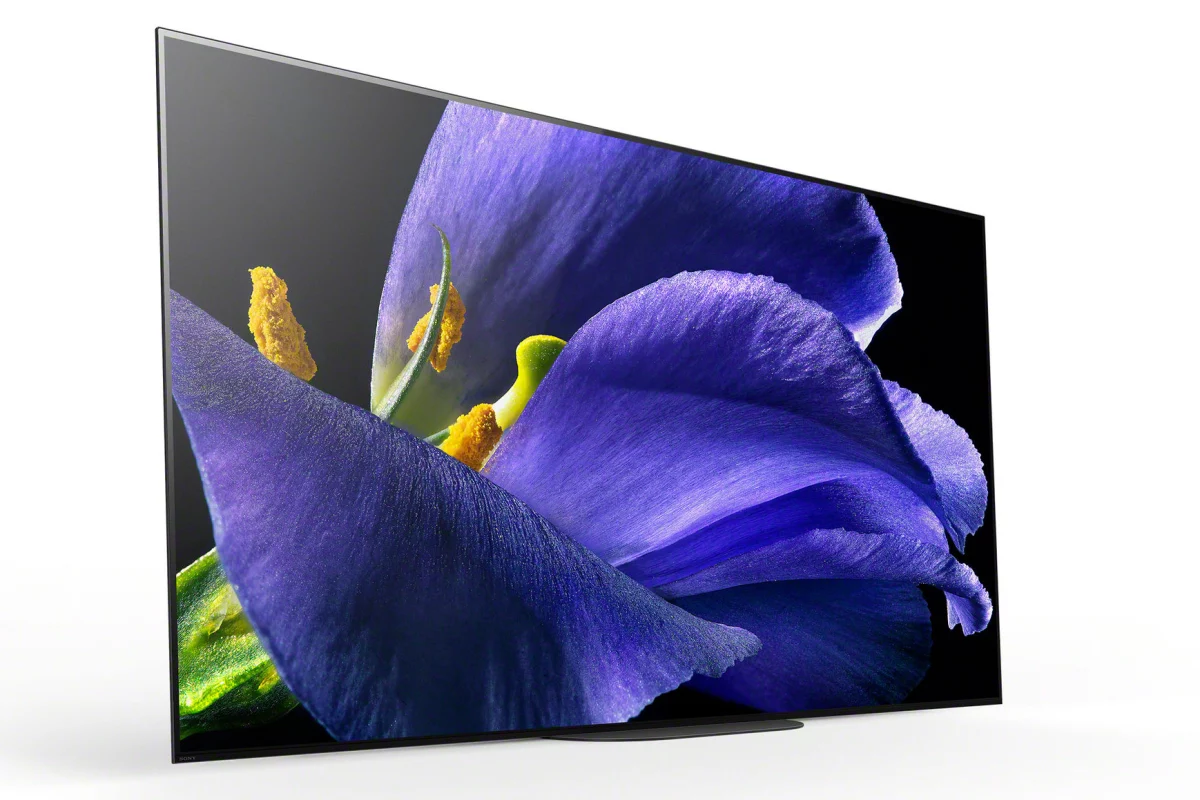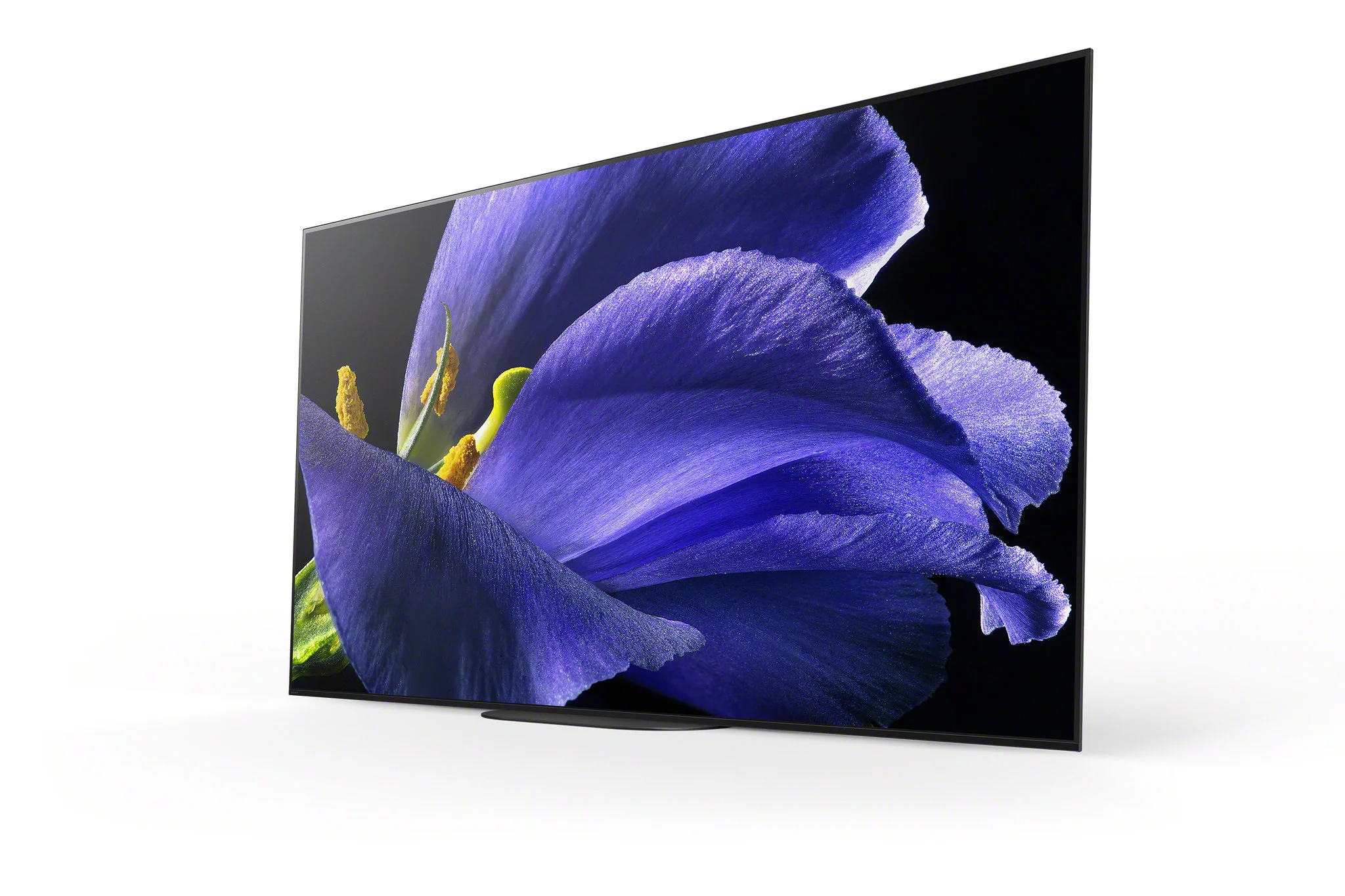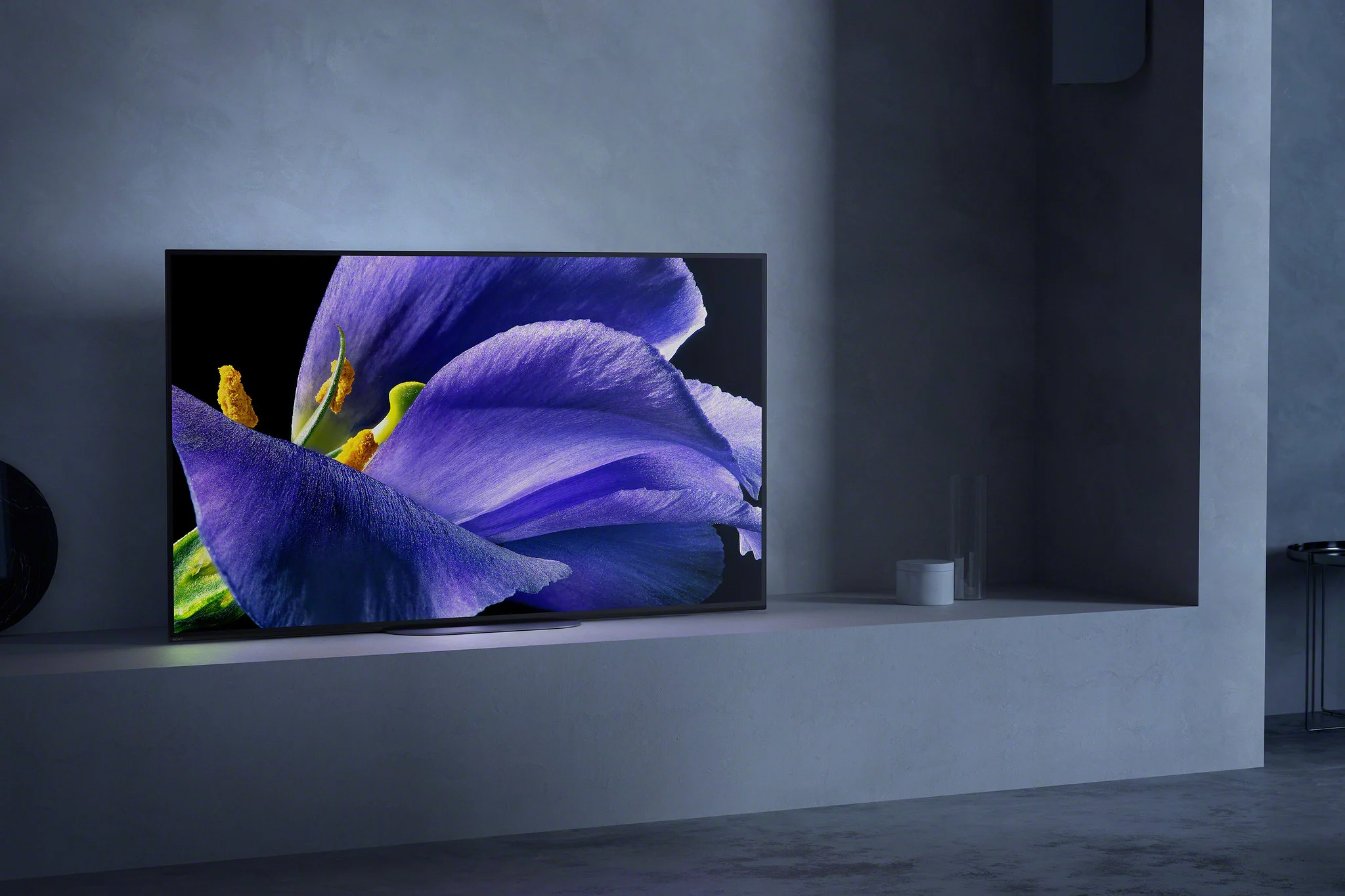We're a big fan of OLED TVs here at New Atlas, thanks to the perfect black, wide viewing angles and quick response times the technology offers. We reviewed Sony's A8F (AKA the AF8 in Europe) OLED TV back in 2019, and that set impressed with its clean, minimalist design, superb image processing and motion processing, and Acoustic Surface speaker technology. So, it was with much anticipation we took receipt of its successor. We spent a few weeks with the A9G (AKA the AG9), which builds on the strong points of the A8F and addresses a major oversight of its predecessor.
At a glance:
- Sony's picture and motion processing tech shines on OLED
- Acoustic Surface Audio+ system delivers impressive sound without soundbar or surround sound system
- Minimalist design keeps the TV looking great even when turned off
- Premium TV carries a premium price tag
Sony announced the A9G as its new flagship 4K OLED TV at CES 2019 and in the past year it has managed to rack up its fair share of awards and recognition. But as is the way with technology, the A9G is set to be knocked off its perch by the A8H (seriously, who's responsible for these model names?) that was announced at CES last month, but does the A9G still hold its own?
Our only real gripe with the A8F related not to the TV's picture, but its Acoustic Surface system. The inability to make use of the "screen speaker" as a center channel speaker in a surround sound setup seemed to be a glaring oversight and it's something Sony addressed in subsequent models through the addition of a dedicated speaker cable terminal, but we'll get to that a bit later. First up, how does the TV look?
Design

The design of the A9G is largely unchanged from its predecessor, with Sony sticking with a clean, minimalist look – and I've got no issue with that. Again, a ghostly logo on the bottom left of the thin bezel is the only Sony branding visible on the front of the TV and the table-top stand still sets the TV on a slight backward lean – but at less of an angle than the A1E that divided opinions (I wasn't a fan). I didn't get out the protractor, but the tilt of the A9G on the stand is only (barely) noticeable when looking at the TV directly side on and definitely not an issue when viewing front on.
The stand itself is more oval than previous iterations and for the 65-inch model we reviewed has a small footprint of just 46.5 cm (18.3 in) wide and 25.5 cm (10 in) deep, making it suitable for even small surfaces (the 55-inch model gets the same stand, while the 75-incher's is about 50 x 30 cm). This sees the lower edge of the screen sitting less than 1 cm above the supporting surface, so it almost appears as if the TV is balancing on its lower edge and provides an elegant look when the TV is off. Rear ports can be hidden behind plastic covers and the cable management system keeps cords wrangled and out of sight if the rear of the TV is going to be visible as well.
With no need to accommodate backlighting, the A9G's panel from LG Display is less that 6 mm thick, with all the electronics and subwoofer system packed inside the centrally located rear casing that extends the depth of the TV to 40 mm (49 mm for the 75-inch) and ensures the TV will look good wall-mounted. But you'll want to make sure the wall mount is installed properly because there's a bit of weight to the A9G – about 18.7 kg (41 lb) for the 55-inch, 21 kg (46 lb) for the 65-inch and a hefty 35.3 kg (78 lb) for the 77-inch.
Picture

We won't bother going into detail about the benefits of OLED panels, other than to say the ability to display perfect blacks – and therefore, infinite contrast ratios – lets OLED TVs display more detail in dark areas without halo effects around highlights. OLED still can't compete with LCD TVs when it comes to brightness, and you'll still want to view the A9G in a darkened room for the best results, but the discrepancy isn't as great as it was just a couple of years ago. The brightness of the A9G is easily enough to overcome the ambient light in even a bright room and problems only arise if you've got a sun-drenched window or light source reflecting directly off the screen.
This is particularly bad when viewing dark content, which can turn the screen into a bit of a dull mirror, so, If such reflections are impossible to avoid in your room, you might want to opt for an LCD TV with a less reflective screen or find another home for the TV.
As you'd expect from a 4K TV, native 4K content looks absolutely stunning on the A9G, and support for HDR10 (but not HDR10+), HLG and Dolby Vision gives compatible HDR content a pop thanks to high HDR peak brightness – SDR performance is similarly impressive. But most of the time most people are still dealing with 1080p, or even 720p, content, which means upscaling, and here the A9G shines as well.
Sony's picture processing tech has been amongst the best in the business for some time and the X1 Ultimate processor ensures that run continues. This slice of silicon is responsible for handling upscaling duties and, unlike its predecessor the X1 Extreme that could process content frame-by-frame, the X1 Ultimate is object-based, meaning it can render different objects within a frame separately. The end result? There are no obvious upscaling artifacts even on 480p and 720p content.
Meanwhile, Sony's Motionflow XR processor, which, again, has been amongst the best in the business for a while, takes care of motion handling in Auto and Custom modes and does a similarly excellent job. The motion interpolation, where additional frames are inserted into lower frame-rate content, is great for fast-moving sports, but we prefer to disable such technology for movies and other non-sport content to avoid the dreaded "soap opera effect." Personal preferences will play a part here so you might need to poke around in the settings to tailor the picture to match them, but the settings are pretty good out of the box.
While LG's OLEDs have always offered lower input lag, Sony has lifted its game in this area. In Game mode, the A9G's achieves input lag of just under 27 ms (in comparison, LG's C9 is capable of 13 ms). While casual gamers might struggle to notice much (if any) difference, a bigger consideration for those looking for a more future-proof purchase would be the C9's inclusion of four HDMI 2.1 ports (the A9G only has HDMI 2.0) and support for HDMI VRR (variable refresh rate), which helps reduce judder and frame tearing. Still, games on the A9G really pop and look fantastic, so if your diet consists mostly of movies and TV shows with a side of gaming, you shouldn't be disappointed.
Burn-in
It wouldn't be an OLED TV review if we didn't mention burn-in. Unsurprisingly, we didn't experience any image retention or burn-in issues in the few weeks we spent with the A9G – and if you vary your viewing content then it's not something you should experience either. Sure, there's a risk of burn-in if you leave the TV on the same channel with a vibrant static logo or play the same game with a persistent on-screen static object for hours a day, day after day. However, the Pixel Shift and Panel Refresh features will help prevent burn-in and it's not something most users will have to worry about.
Audio
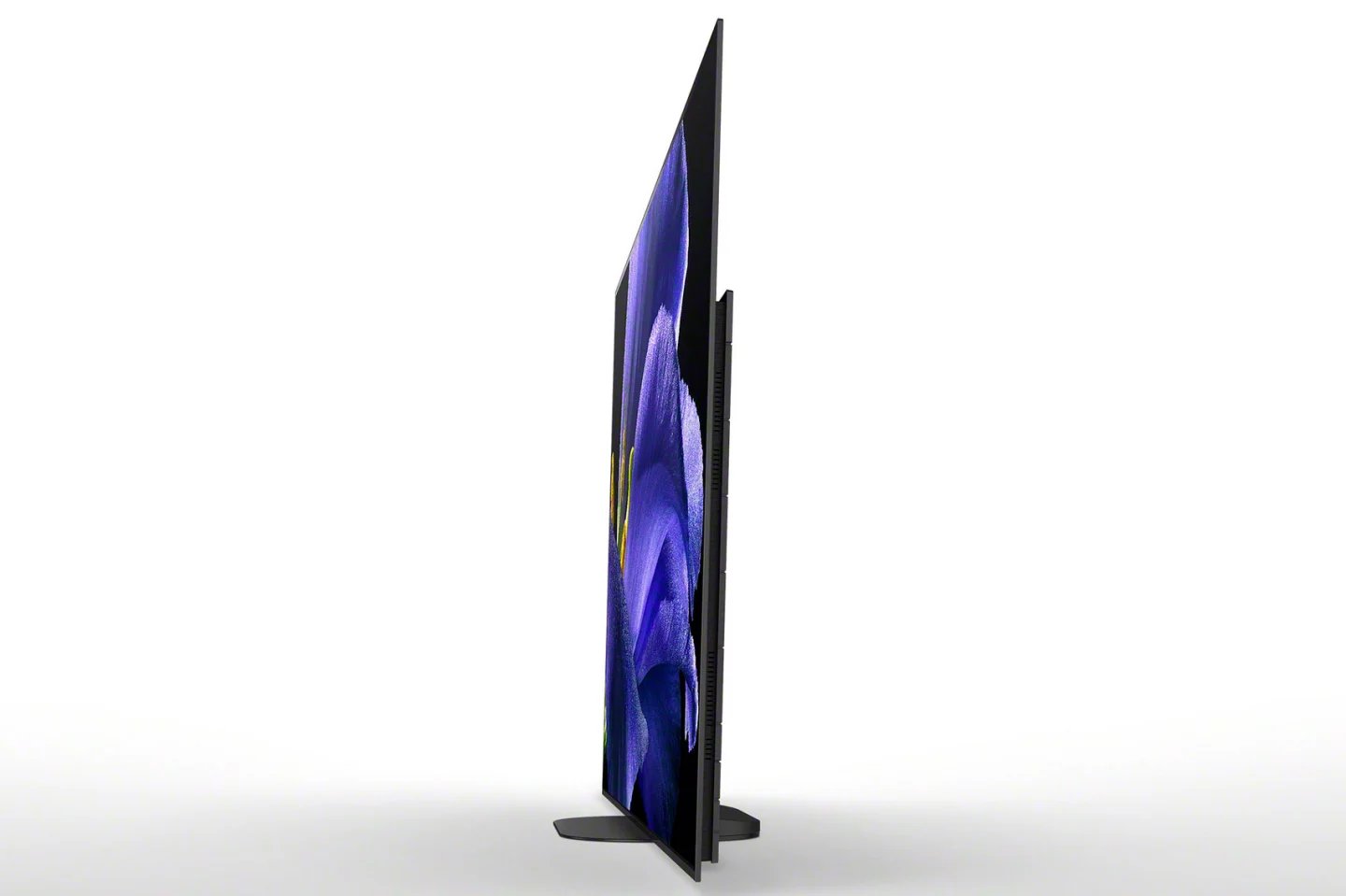
While a lot of consumers will struggle to see much of a difference in picture quality between the various top-end OLED TVs on the market when browsing in stores, Sony has managed to make the audio performance of its OLEDs a point of differentiation. TV audio has suffered ever since the move from boxy CRT TVs, with plenty of depth to accommodate decent speakers, to flat panel TVs. But Sony has sought to reverse that trend with its Acoustic Surface technology that turns the TV display into a speaker through the use of actuators that (invisibly) vibrate the panel. There are also two subwoofers integrated into the TV to provide bass.
The technology impressed us in the A8F and has now evolved to become Acoustic Surface Audio+ in the A9G. Despite losing one actuator when compared to the original system, the 2.2 implementation is capable of powerful and well defined audio, making it an attractive option for those without a soundbar or stand-alone surround sound system. And if you do have a surround sound system, the A9G can serve as the center channel thanks to the inclusion of a dedicated speaker input. As mentioned, this seemed a glaring oversight on the A8F and is a welcome advance. In practice it works very well, with dialogue being emitted from the screen rather than a speaker sitting below it and each sound mode able to be customized individually with the graphic equalizer. And unlike the A8F that only supported ARC over HDMI, the A9G supports the latest high-quality audio formats through eARC.
We suspect a lot of buyers of what is a premium TV will already have a separate sound system (which should still deliver superior sound), but for those that don't the A9G is more than adept at delivering great audio to complement the great picture.
Smart TV
Sony is still abdicating its smart TV duties to Google, sticking with Android TV and building a Chromecast into the A9G with support for Google Home and Amazon Alexa. We found the previous iteration of Android TV on the A8F to be a bit of a resource hog, resulting in sluggish performance even when moving around the interface, but Android 8 Oreo is a definite improvement and the A9G deals with it great. Flipping through menus is now faster and apps run more smoothly despite the A9G having only 2.5 GB of RAM compared to the 4 GB in older models. We're not sure if it's Google's refinements to Android TV or the extra processing power Sony is throwing at it, but the improvement in performance is very welcome. So, although Android TV still isn't our preferred smart TV platform, it has improved markedly and does everything you need it to.
In addition to a reduction in RAM, Sony has also ditched the ability to record free-to-air TV on a USB drive plugged into the TV – something that's become standard on most TVs in recent years. The company seems to be of the belief that if consumers want to watch something again they can get a separate PVR or make use of the online catch-up services offered by various broadcasters, not to mention the multitude of streaming services. That may be true, but it's a curious (and for some no doubt annoying) decision, considering you can still play video files from a USB drive plugged into the TV.
Remote

The brushed aluminum face of the A9G's remote is classier than the mat black of the remote that came with the A8F, and the number of buttons has decreased, but only very slightly. It's still a little busy for our liking, but that's not it's biggest flaw – that mantle goes to the lack of a backlight for the buttons. Sony's far from being the only TV manufacturer guilty of this, and users obviously get used to where the buttons they regularly use are over time, but for an OLED TV that is capable of perfect blacks and is best viewed in a darkened room, having to use the light on a phone to illuminate the remote or accidentally hitting the wrong button in the dark seem like hassles that could very easily be avoided.
Sony would probably counter that it's possible to use Android TV's voice commands to control the TV, and while that functionality is definitely handy for inputting search terms, it's slower than pushing a button for basic TV functions. Surely an extra LED or two crammed into a remote wouldn't increase the cost of a TV too much?
Conclusion
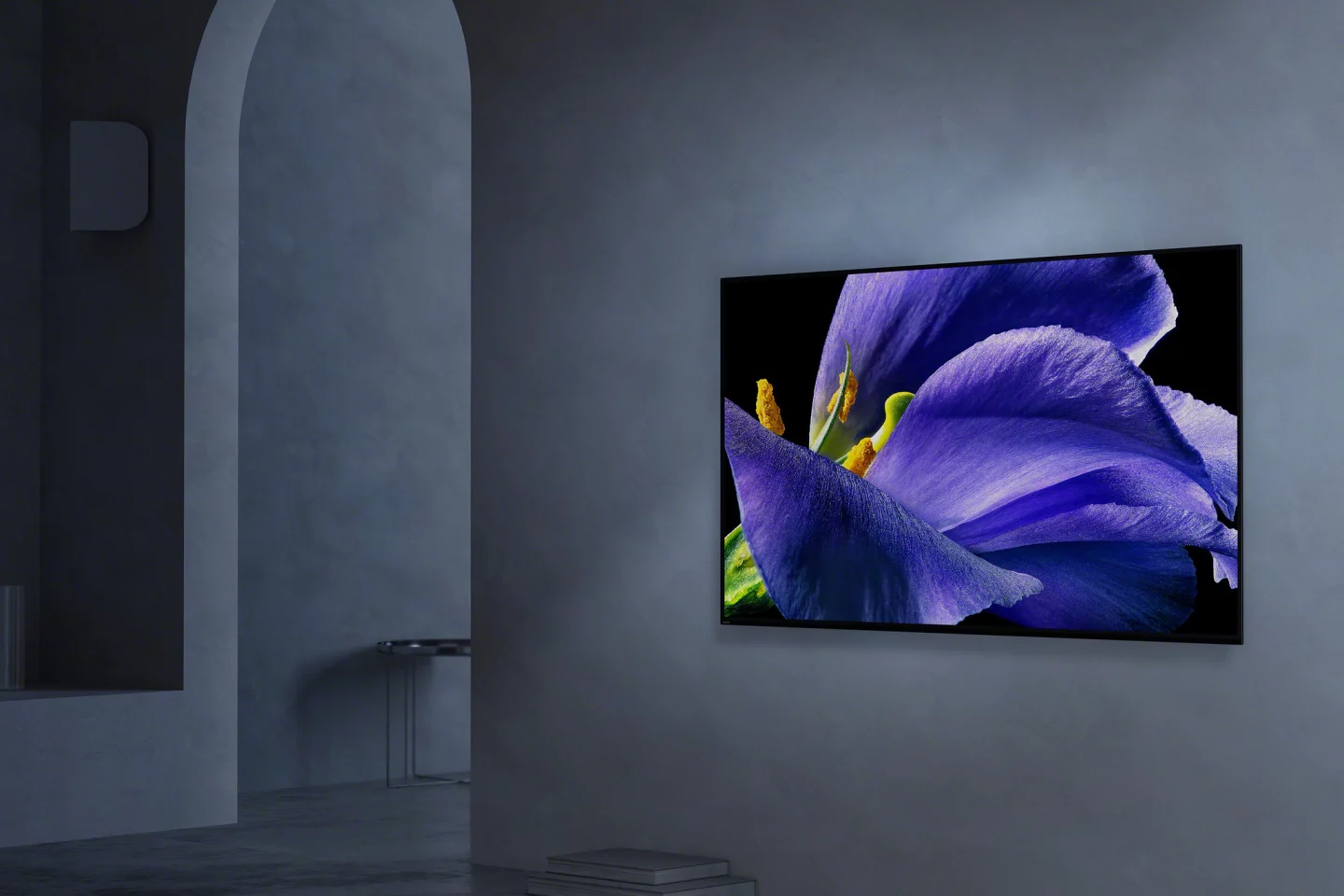
The A9G is set to be knocked off its flagship perch by the A8H, but remains a very attractive proposition for anyone after an OLED TV with Sony's state-of-the-art image and motion processing technology, not to mention its innovative and unique Acoustic Surface Audio+ system. The biggest barrier for most people will likely be the price. At US$2,500 for the 55-inch, $3,500 for the 65-inch, and a tear-inducing $6,000 for the 77-inch, the A9G isn't cheap, but Sony would probably argue that you get what you pay for. That's usually true, but whether you're willing to pay what amounts to a $1,000 premium over competitor OLEDs for Sony's engineering expertise will probably come down to the size of your bank balance or your desire for the Acoustic Surface Audio+ system. Hardcore gamers may be better off looking at LG's C9, but for TV and movies with the occasional gaming session thrown in, the A9G won't disappoint. Highly recommended.
